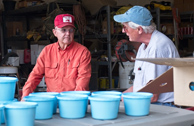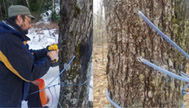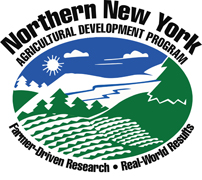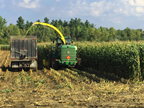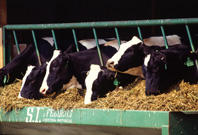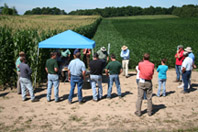
May 7, 2020. Industrial hemp and alfalfa have been added to the annual crop health survey funded by the farmer-driven Northern New York Agricultural Development Program (NNYADP). Cornell Cooperative Extension (CCE) regional fields crops specialists scouted fields on 30 regional farms in 2019 for early detection of disease in corn, soybean, alfalfa, and hemp crops.
The results of NNYADP-funded crop surveys from 2013 through 2019 are posted on this Northern New York Agricultural Development Program website at https://nnyagdev.org/index.php/field-crops/research.
“This regional survey is a proactive and systematic way to alert growers to respond quickly to limit emerging and re-emerging plant diseases, to document trends, and to develop strategies to reduce the threat to crop health, sustainability, and the profit margin that is so narrow for growers,” says project leader and CCE Regional Field Crops Specialist Michael E. Hunter.
This NNYADP-funded field crops survey, restarted in 2013, has traditionally focused on corn and soybean as foundational crops, grown as both livestock feed and cash crops, for the regional farming industry. Hunter says, “Alfalfa has been added to the survey as another essential dairy industry crop, and, with grower interest increasing in industrial hemp, we began scouting those plantings in 2019.”
Hunter and CCE Regional Fields Crops and Soils Specialist Kitty O’Neil scout fields and send samples of plant tissue for diagnosis at the Bergstrom Pathology Lab at Cornell University in Ithaca, N.Y.
In 2019, the NNYADP crop health survey identified 13 crop diseases: 2 in corn, 7 in soybean, 2 in alfalfa, and 2 in industrial hemp. Northern corn leaf blight at very low levels, and eyespot, a common fungal disease in corn, were identified in corn crops in the region in 2019.
Northern stem canker was identified in soybean but was not problematic in NNY in 2019. Hunter notes, “While there have been significant yield losses reported to this disease in Midwestern states, to date, no yield loss has yet been documented in New York State crops to northern stem canker.”
Warm, wet weather conditions during podfill in 2019 fostered development of Cercospora leaf blight, a non-yield limiting disease in soybean. Levels did not result in any rejection of loads shipped to market. Other soybean diseases identified in NNY in 2019 were downy mildew, white mold, frogeye leaf spot, anthracnose, and Septoria brown spot.
The cool, wet spring of 2019 favored growth of Leptosphaerulina leaf spot and Stemphylium leaf spot in alfalfa crops; however, incidences were not severe nor widespread, and neither disease negatively impacted forage quality or overall crop yield.
White mold and Botrytis gray mold, common molds that can cause serious damage to industrial hemp grown in the field and in greenhouses, were seen in plantings of industrial hemp, an emerging crop in Northern New York.
First-time confirmations of emerging diseases are added to state and national crop pathogen databases with field samples archived in the Cornell University Field Crop Pathogen Culture Collection. DNA sequences of any confirmed new pathogens are submitted to the National Institutes of Health GenBank genetic sequence database.
“This yearly scouting and diagnosis survey project adds data and trending to help growers adapt their strategies for maintaining crop health, preventing disease, and efficiently and cost-effectively treating issues locally, regionally, and statewide,” Hunter adds.
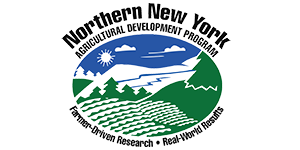
Funding for the Northern New York Agricultural Development Program is supported by the New York State Legislature and administered by the New York State Department of Agriculture and Markets.
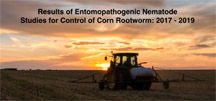 Lowville, N.Y.; April 22, 2020. Texas A&M Agri-Life Extension has posted a video highlighting how the science of biocontrol nematode use developed in Northern New York is now helping corn growers in Texas and New Mexico. The video is posted at
Lowville, N.Y.; April 22, 2020. Texas A&M Agri-Life Extension has posted a video highlighting how the science of biocontrol nematode use developed in Northern New York is now helping corn growers in Texas and New Mexico. The video is posted at 